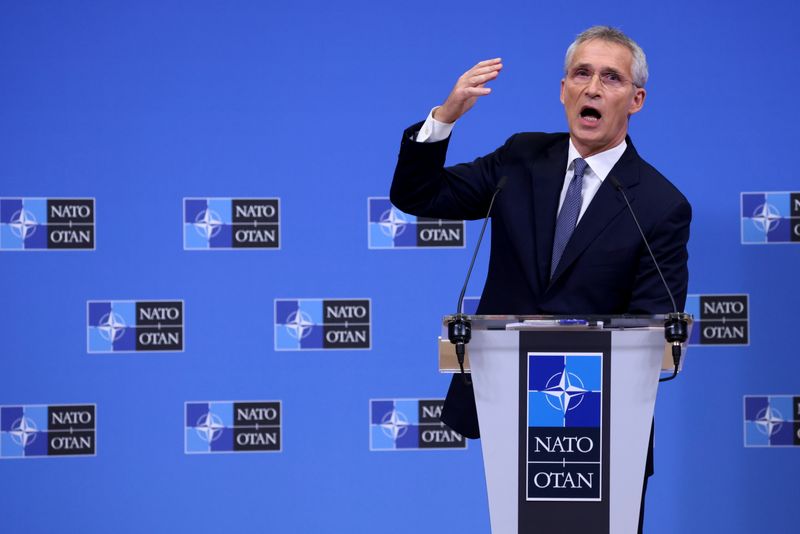By Robin Emmott
BRUSSELS (Reuters) -NATO defence ministers agreed a new master plan on Thursday to defend against any potential Russian attack on multiple fronts, reaffirming the alliance's core goal of deterring Moscow despite a growing focus on China.
The confidential strategy aims to prepare for any simultaneous attack in the Baltic and Black Sea regions that could include nuclear weapons, hacking of computer networks and assaults from space.
"We continue to strengthen our alliance with better and modernised plans," NATO Secretary-General Jens Stoltenberg said after the meeting, which also agreed a $1 billion fund to provide seed financing to develop new digital technologies.
Officials stress that they do not believe any Russian attack is imminent. Moscow denies any aggressive intentions and says it is NATO that risks destabilising Europe with such preparations.
But diplomats say the "Concept for Deterrence and Defence in the Euro-Atlantic Area" - and its strategic implementation plan - is needed as Russia develops advanced weapon systems and deploys troops and equipment closer to the allies' borders.
"This is the way of deterrence," German Defence Minister Annegret Kramp-Karrenbauer said of the plan.
"And this is being adapted to the current behaviour of Russia – and we are seeing violations particularly of the air space over the Baltic states, but also increasing incursions over the Black Sea," she told German radio Deutschlandfunk.
Approval allows for more detailed regional plans by the end of 2022, a U.S. official said, allowing NATO to decide what additional weapons it needs and how to position its forces.
FLASHPOINTS
In May, Russia amassed some 100,000 troops on its border with Ukraine, the highest number since Moscow annexed Crimea in 2014, Western officials say. In September, Russia used new combat robots in large military drills with its ex-Soviet ally Belarus that have alarmed Baltic allies.
Russia is upgrading or replacing Soviet military space systems to potentially attack satellites in orbit, developing artificial intelligence-based technologies to disrupt allied command systems, and also developing "super weapons".
Unveiled in 2018, they include nuclear-capable hypersonic cruise missiles that could evade early-warning systems.
Retired U.S. General Ben Hodges, who commanded U.S. army forces in Europe from 2014 until 2017, said he hoped the plan would foster greater coherence in NATO's collective defence, meaning more resources for the Black Sea region.
"To me, this is the more likely flashpoint than the Baltics," Hodges told Reuters, noting fewer big allies such as Britain and France have a strong presence in the Black Sea, and Turkey is more focused on conflict in Syria.

Jamie Shea, a former senior NATO official now at the Friends of Europe think-tank in Brussels, said the plan might also help to cement a focus on Russia at a time when major allies are seeking to boost their presence in the Indo-Pacific and counter China's rising military power.
"The assumption up until now has been that Russia is a nuisance but not an imminent threat. But the Russians are doing some worrying things. They're practising with robotics, and hypersonic cruise missiles could be very disruptive indeed," Shea said.